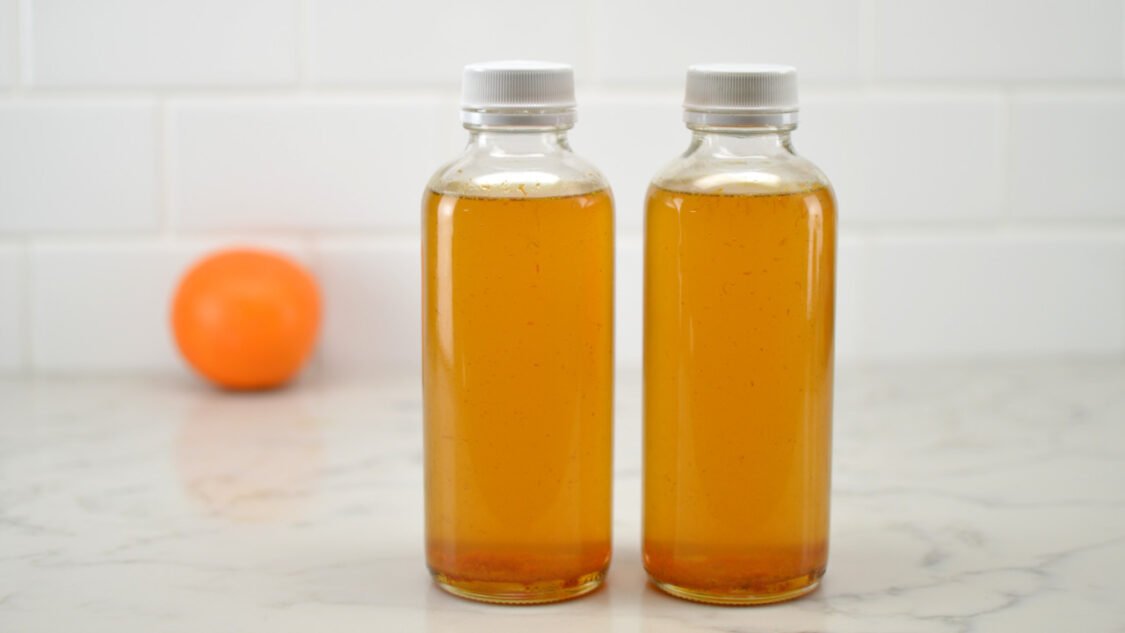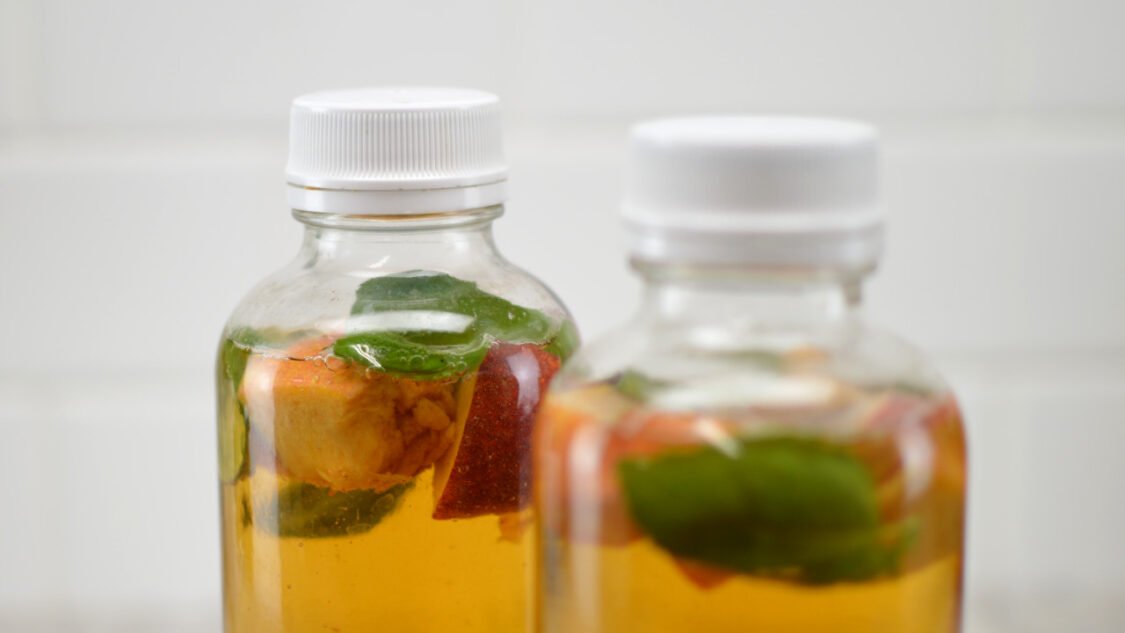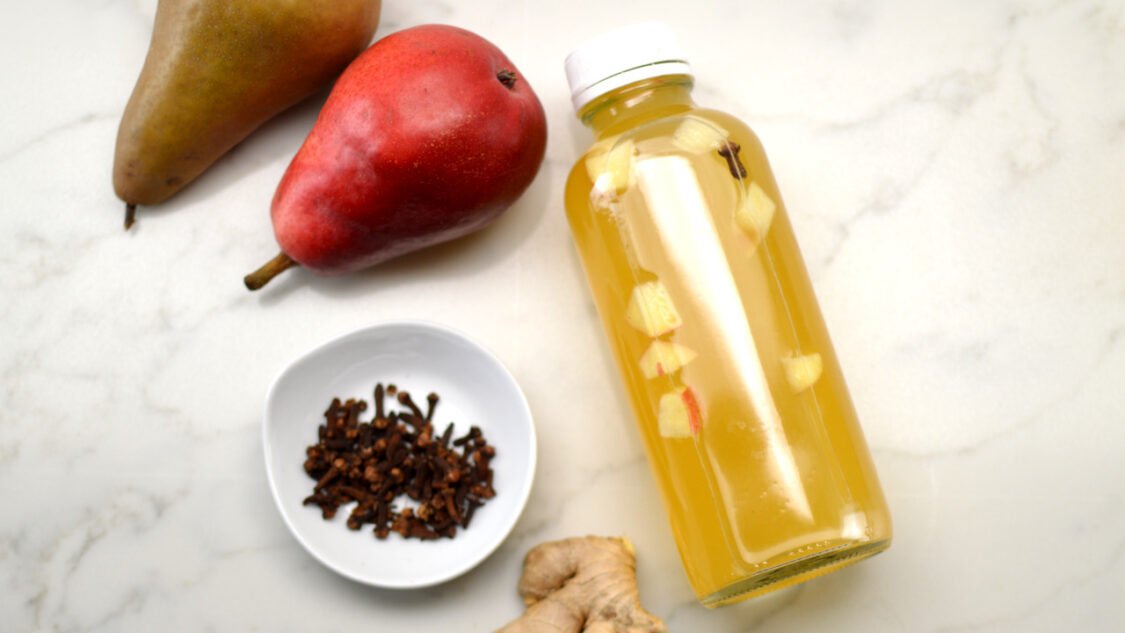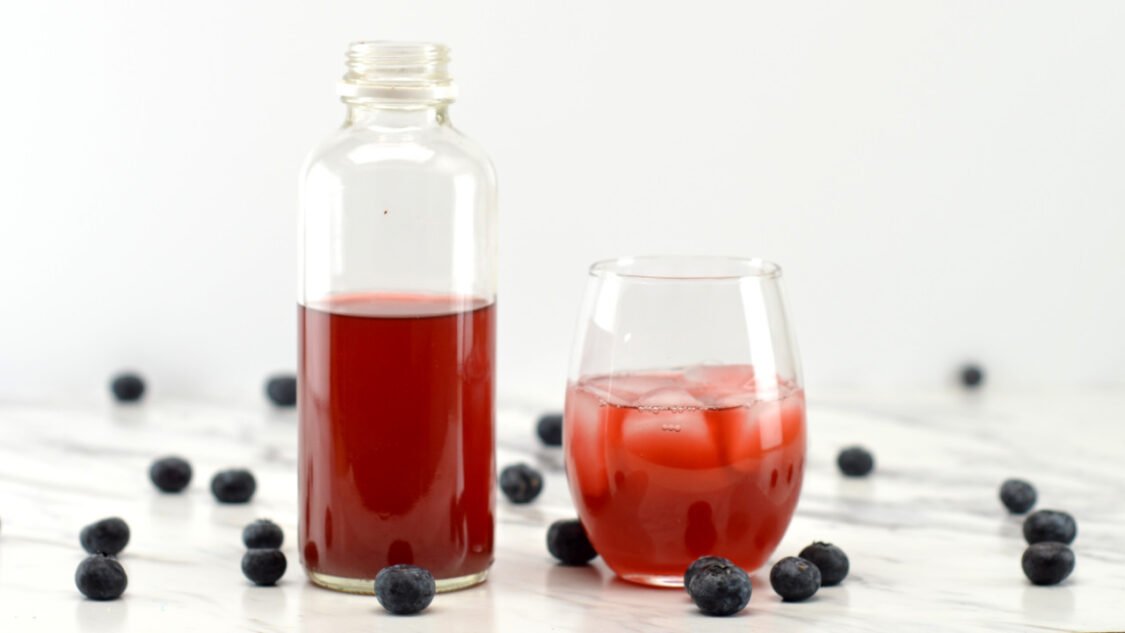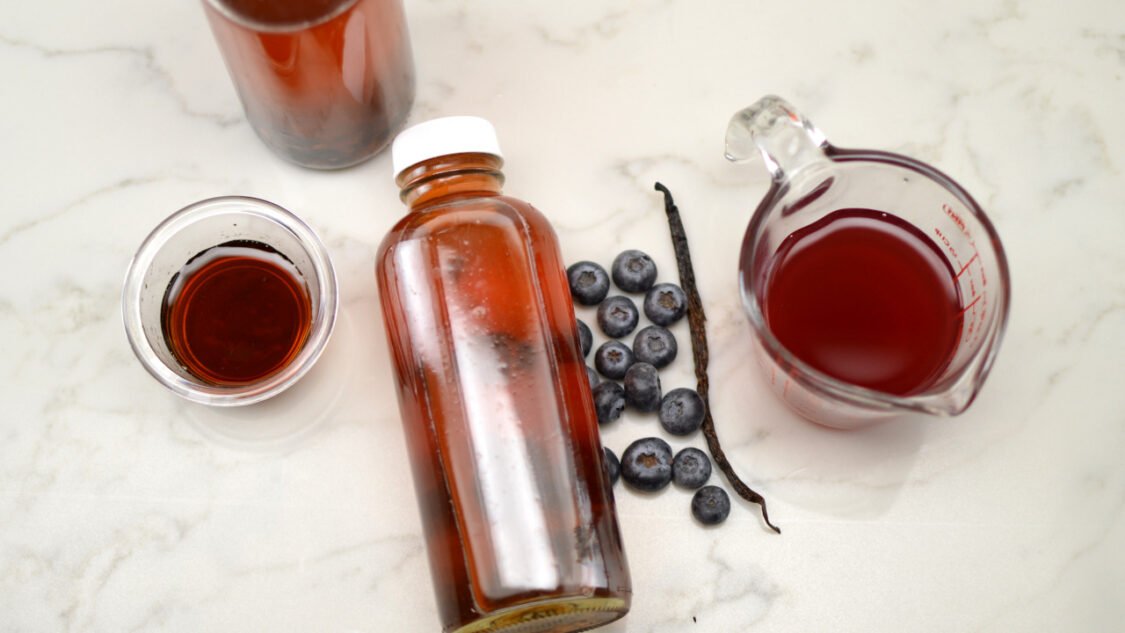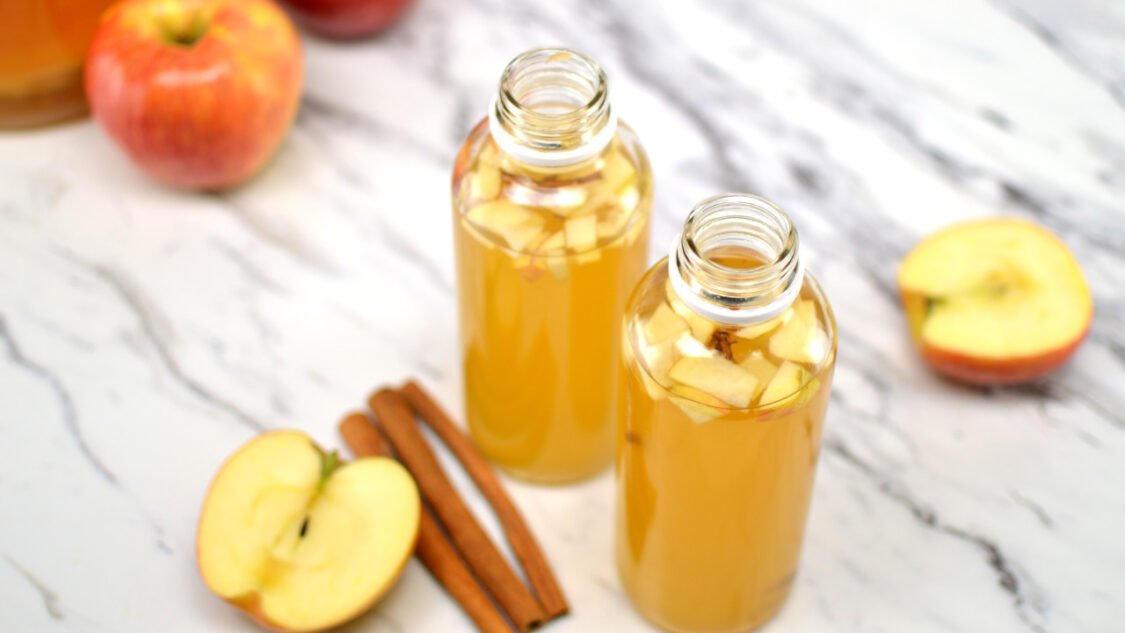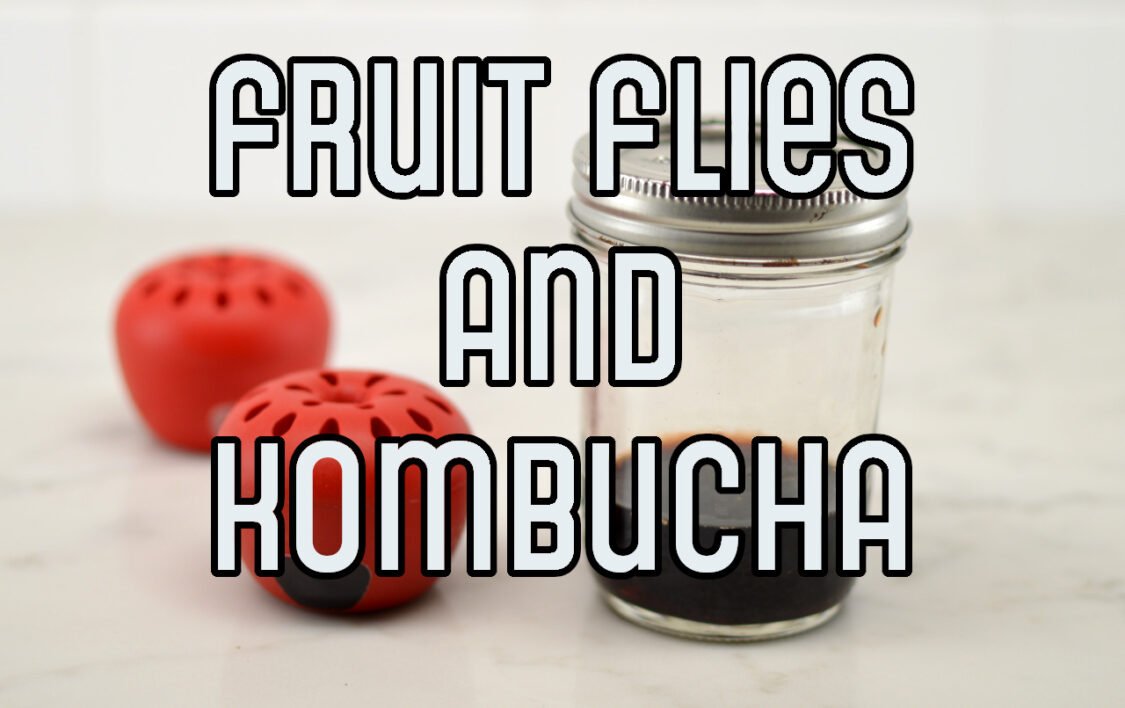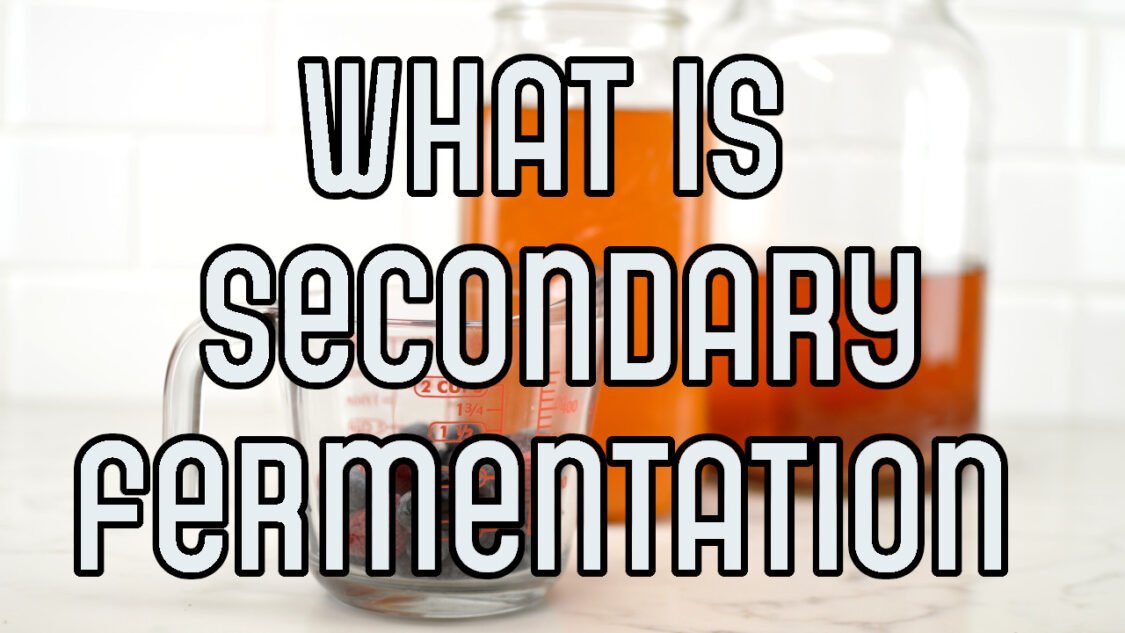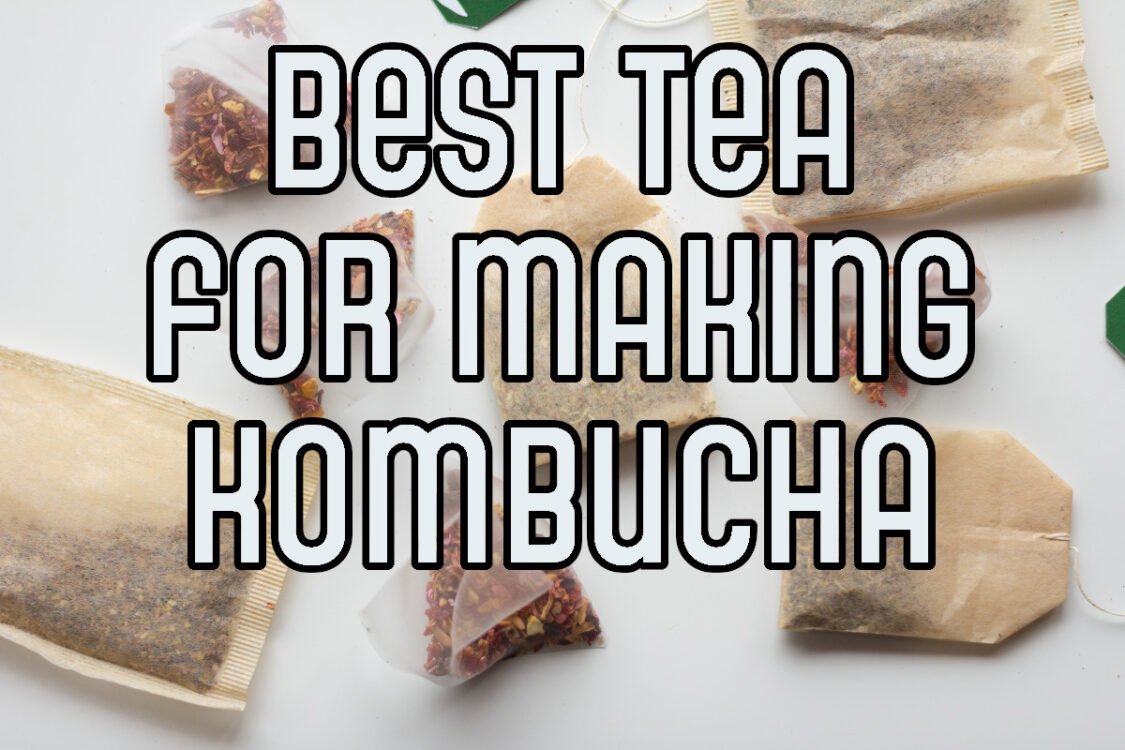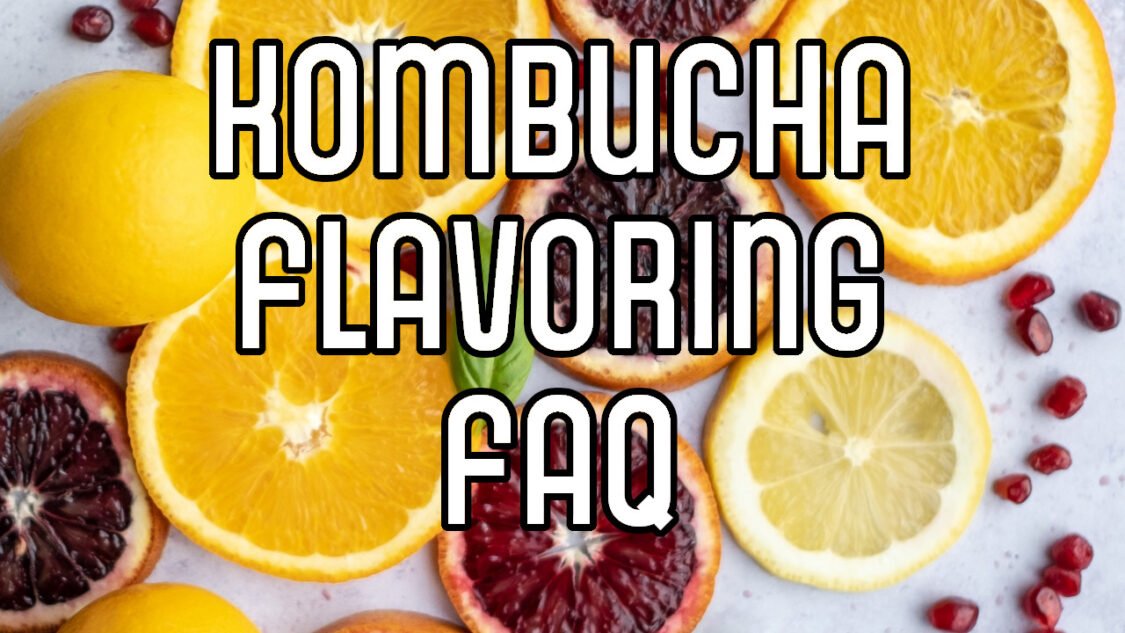Pineapple Basil Kombucha
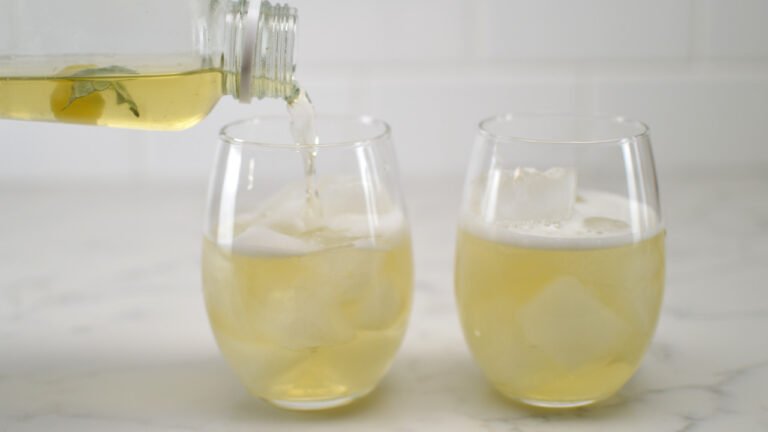
For this recipe I am using the base kombucha as green tea. Recall that green tea is less processed than black tea, resulting in a lighter, fresher taste and a slightly grassy, earthy or vegetal aroma. Black tea, on the other hand, is fully fermented and has a stronger, more robust flavor with a deeper color.
Green tea pineapple basil kombucha is refreshing with tropical notes from the fresh pineapple accentuated with an slight herbal aromatic from the basil It is a pale-yellow color with the enticing aromas of juicy, tropically pineapple and herbaceous basil.
With each first sip you will taste the subtle earthy and slightly tart green tea kombucha base followed by the sweet, juicy and tropical flavors of fresh pineapple balanced by the herbal and slightly peppery taste of basil.
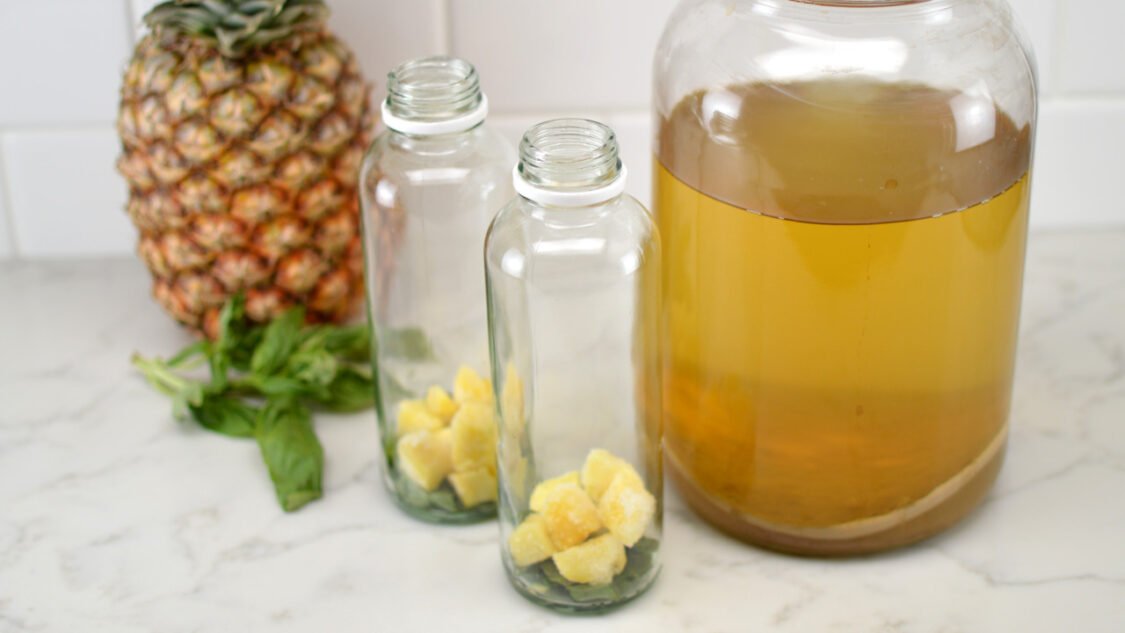
Kombucha Fermentation Overview
There are two fermentation phases when making kombucha:
Primary Fermentation: This is when you transform sweet tea into tart and tasty kombucha. Get all the details at my article on how to make kombucha.
Secondary Fermentation: This is when you carbonate your homemade kombucha by adding flavors (like fresh pineapple and basil) and sugar and bottling it.
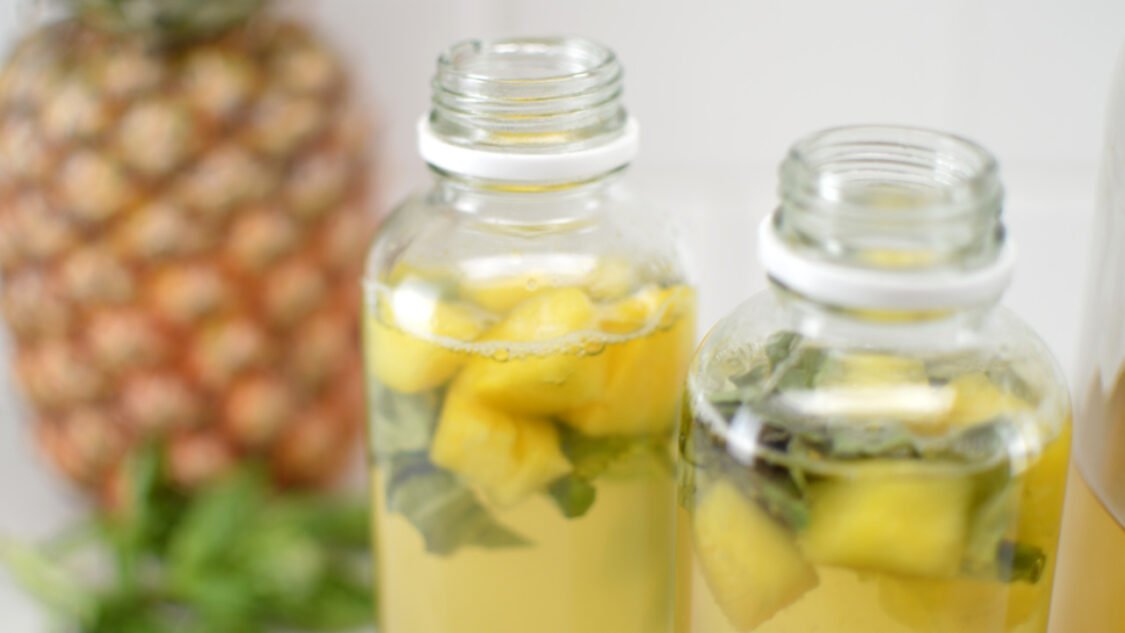
Preparing for Secondary Fermentation
This recipe makes about 7 x 16 fluid ounce bottles of finished kombucha (from a 1-gallon batch of unflavored homemade kombucha aka from your primary fermentation).
Reserve 2 cups (about 16 oz / 0.47L) kombucha and your SCOBY from your completed primary fermentation and set aside – you will use this as your starter for your next gallon batch of kombucha.
With your kombucha starter tea and SCOBY placed aside, you now have enough kombucha left to flavor and fill your bottles. This guide assumes are using 16 oz. glass bottles which are a popular choice for kombucha; however, there are many options for bottling kombucha.

Ingredients to make Pineapple Basil Kombucha
Green Tea Kombucha Finished kombucha from your first fermentation is the base to which you will add the pineapple and and basil. Don’t worry, if you don’t have green tea kombucha ready to flavor black tea also works great.
Pineapple: Pineapple is juicy and sweet, with a bright yellow color and a fragrant aroma. Pineapple has a distinct flavor that is both sweet and tangy, with a slight acidity with notes commonly associated with the tropics. Fresh or frozen pineapple will work for this recipe.
Basil leaves: Basil is an herb that is a member of the mint family and has fragrant, green leaves that are highly aromatic and flavorful. The flavor of basil is sweet, slightly peppery, and somewhat reminiscent of anise or licorice.
Sugar: A touch of additional sugar for bacteria and yeast to feed on which creates carbonation–extra fizzy goodness. When filling 16 ounce bottles I’ve found a sugar cube has the right amount of sugar (1 tsp) for carbonation and is a convenient way to add the right amount without the mess.
How to make Pineapple Basil Kombucha
Add Flavors: Divide chopped pineapple and fresh basil leaves between the bottles.
Bottle: Transfer kombucha to fermentation bottles.
Condition: For 3 to 10 days, until it reaches the carbonation level you like.
Enjoy: Chill in the fridge before serving and strain out fruit pieces when pouring (optional)
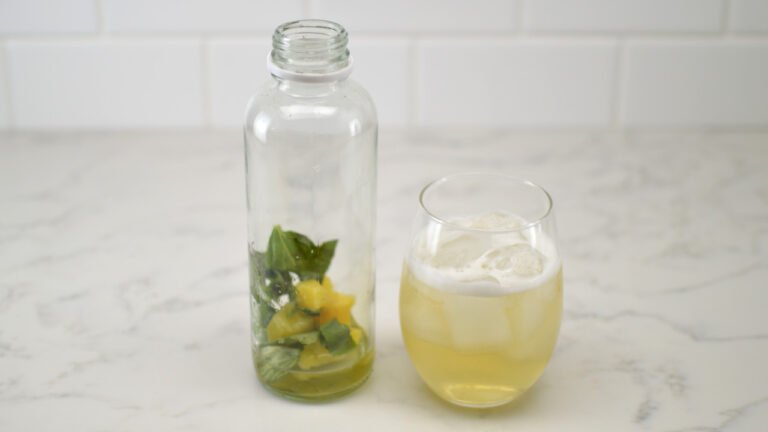
Pineapple Basil Kombucha Recipe
Yield: 7 bottles • Active time: 20 minutes • Total time: 3 -10 days
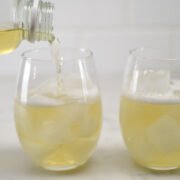
This recipe assumes you are doing a secondary fermentation (flavoring and carbonation) in the bottle. You may also incorporate a third fermentation using the same proportions but following the third fermentation steps.
Ingredients:
1 gallon homemade kombucha from a first fermentation, 3.7 L – made with green tea
1 cup fresh or frozen pineapple
1/2 cup fresh basil leaves
7 sugar cubes or 2 Tbsp. white sugar, 12 g
Instructions:
Make Kombucha: If you haven’t already, make a 1 gallon batch of kombucha using 75% (6 bags or 6 tsp) black tea and 25% (2 bags or 2 tsp) oolong tea.
Prepare fruit: Coarsely chop pineapple into medium-sized pieces. Remove basil leaves from stems, bruise slightly and cut leave approximately in half.
Flavor: Evenly divide chopped pineapple and basil leaves between the bottles
Sweeten: Add sugar cube or 1 tsp sugar to each bottle to provide the SCOBY another food source to create carbonation.
Fill bottles: Transfer kombucha into fermentation bottles, leaving about 1 inch empty space at the top.
Cap: Cap the filled bottles and tighten the cap snugly.
Ferment: Place in a dark, room temperature area for 3 to 10 days, until it reaches the carbonation level you like. This process will go faster in warmer climates, and slower in cooler climates.
Enjoy: Chill your Pineapple Basil Kombucha bottles in the refrigerator before serving and strain the kombucha to remove zest when serving (optional).
Homemade kombucha can be stored in the fridge, tightly sealed, for several weeks
Tips & Tricks:
Make sweet tea for your next batch the night before you flavor and bottling and let it cool on the stove overnight so that you can flavor your kombucha and get your next batch started at the same time.
If this is your first time brewing, it may be helpful to use a plastic water bottle as a gauge. Fill a recyclable plastic bottle with kombucha (leaving 1.5 inches empty at the top). When this bottle becomes rock hard, you’ll know the glass bottles are also ready. This will help you gauge how long it take for kombucha to carbonate your climate and will prevent bottle explosions.
Variation
Pineapple Basil Peppercorn Twist – add two whole black peppercorns to each bottle for an extra pungent, spicy twist!
Nutrition Information:
Kombucha Recipes You Might Also Like
More Kombucha Knowledge
Helping you learn to brew kombucha, find inspiration for new kombucha flavors and use kombucha to make kombucha mocktails

